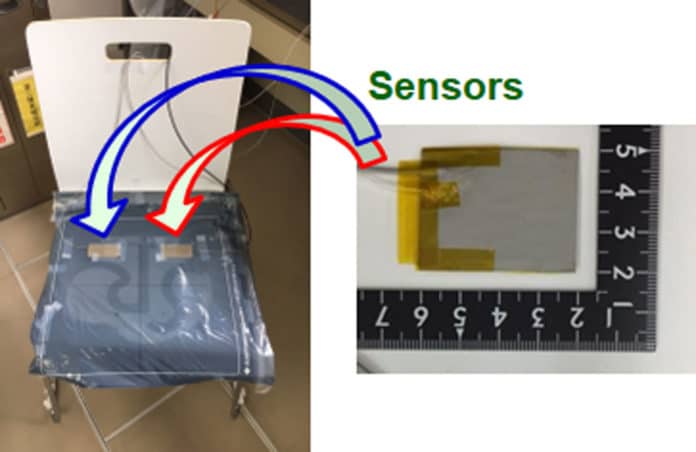Driver monitoring systems, the vehicle safety systems that can detect distraction, drowsiness, and microsleeps of drivers, have been around for a while now. Most current drowsiness detection systems use an exterior, forward-looking camera to monitor lane position or sudden, exaggerated corrections, while the others use an interior camera to check a driver’s face or eyes for signs of nodding off. However, camera-based systems have some drawbacks, such as an exterior camera could be blocked by mud, and an interior camera could be less effective at night.
As a more reliable alternative, the researchers at Japan’s National Institute of Advanced Industrial Science and Technology have developed heat-resistant, pressure-detecting sensors that, when attached to seats, can tell whether a driver is drowsy or has a sudden illness, signaling a future smart car to take action.
Researchers have designed special piezoelectric sheet sensors that can withstand high temperatures, a requirement for electrical and electronic equipment in vehicles. The team prepared zinc oxide-based films directly on a polyimide surface and then screen-printed a silver paste on both sides to obtain a piezoelectric sheet. They then connected a coaxial cable to detect changes in electrical charge with pressure and then folded the sheet in half around the cable. The resulting sensor sheet resisted heating up to 250 ºF (121 ºC), with no changes in its properties.
After showing that the sensor could discriminate changes in mechanical load, the team placed a sensor in the back of a chair. The sensor was able to monitor the driver’s movements and collected information like heart rate and respiration. Two other sensors attached to the sea of a chair could sense when a person leaned left or right with their upper body, which could indicate drowsiness.
Researchers say that the new monitoring system based on the sensors might detect changes in vital signs or body posture in the future, triggering a self-driving car to find a safe location and then stop. The vehicle could also contact emergency healthcare providers depending on the situation. To get to that point, researchers plan to test the piezoelectric sensors in a car, where vehicle motions and vibrations will contribute to background noise in the measurements.
